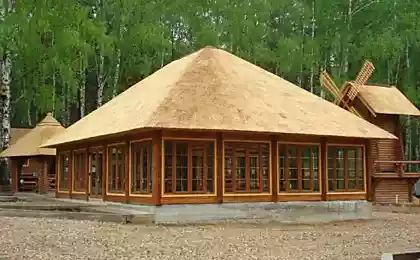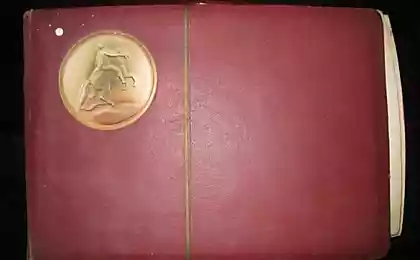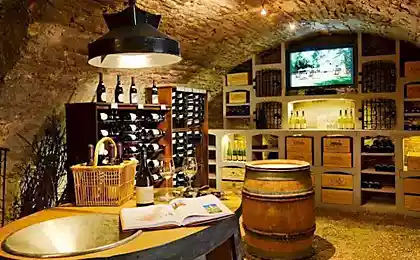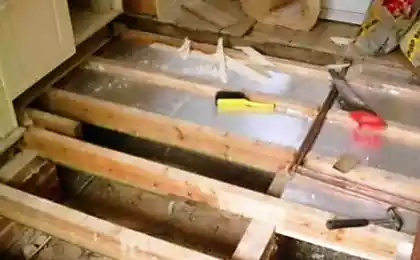139
The guys on the basis of building materials believe in ruberoid, list all its advantages
From the tightness of the roof depends on the comfort and durability of the house. And if resistance to weather conditions and ease of installation of metal roofing do not cause doubts, then when choosing a waterproofing substrate, questions often arise. One of the most common: can you put a ruberoid on the roof, if you are going to cover it with metal tiles?

While some use ultra-modern composite membranes for waterproofing work, others remain faithful to traditional materials. For example, the ruberoid, which has been in use for nearly 150 years, is still popular with homebuilders.

Ruberoid is a rolled roofing material that is obtained by impregnating special cardboard with petroleum bitumen followed by coating with basalt sprinkle. In the middle of the XX century, the USSR was the absolute world leader in its production. And today the ruberoid attracts primarily its low cost.

To make it easier for the consumer to choose the type of ruberoid that fully meets his needs, they are assigned a marking. In accordance with GOST 10923-93, the first letter in the code, as a rule, "P" - ruberoid. But there are exceptions. For example, the letter "X" indicates that the basis is taken glass canvas.
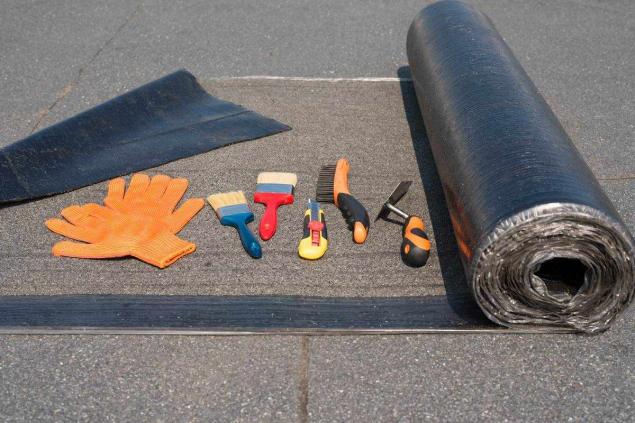
The second letter contains information about the purpose of the product. For example, a ruberoid with the letter “K” (roofing) can be used for the top layer of a roofing pie. And the letter "P" indicates that the product is suitable only for the lining layer.
View this post on Instagram
A post shared by Construction Store (@perviy_stroitelniy_stm)
The third letter helps determine the type of sprinkle, and the numbers indicate the weight of one square meter of coating in grams. This indicator determines the density and mechanical strength of the ruberoid.
The most significant disadvantage of ruberoid is that it melts in the heat and cracks in the cold. Because of this, its service life in comparison with profnastile and metal tile is small.

But the advantages of the material are much more, which explains its long-term popularity. This is the ability to repel moisture, light weight, flexibility, versatility and a very democratic price.
Can I put metal tile on a ruberoid? Yes and no. It depends on the type of roof. If the roof belongs to the cold type and the temperature in the attic and outside differs slightly, then the use of ruberoid is justified and allowed. With the task of waterproofing, he will cope, and steam in this case is practically not formed. Therefore, the installation of vapor isolation can be abandoned.
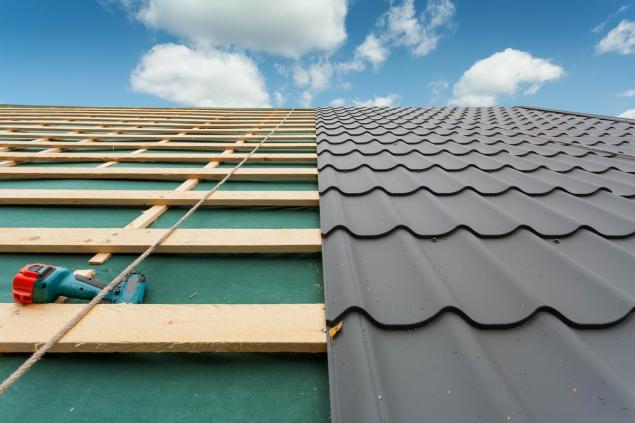
For a warm roof type with a heated attic and a large temperature difference inside and outside from the ruberoid as waterproofing, it is better to refrain.
View this post on Instagram
A post shared by Pokroff Plant (@pokroff_saransk)
Cardboard, impregnated with bitumen, does not miss the pair saturated with moisture. They will be on the slack, and they will be destroyed.
Ruberoid is still the most affordable and inexpensive material for waterproofing. It can be used under metal in some cases. But it is important to understand that this is not always advisable and can lead to a reduction in the life of the roofing.

While some use ultra-modern composite membranes for waterproofing work, others remain faithful to traditional materials. For example, the ruberoid, which has been in use for nearly 150 years, is still popular with homebuilders.

Ruberoid is a rolled roofing material that is obtained by impregnating special cardboard with petroleum bitumen followed by coating with basalt sprinkle. In the middle of the XX century, the USSR was the absolute world leader in its production. And today the ruberoid attracts primarily its low cost.

To make it easier for the consumer to choose the type of ruberoid that fully meets his needs, they are assigned a marking. In accordance with GOST 10923-93, the first letter in the code, as a rule, "P" - ruberoid. But there are exceptions. For example, the letter "X" indicates that the basis is taken glass canvas.

The second letter contains information about the purpose of the product. For example, a ruberoid with the letter “K” (roofing) can be used for the top layer of a roofing pie. And the letter "P" indicates that the product is suitable only for the lining layer.
View this post on Instagram
A post shared by Construction Store (@perviy_stroitelniy_stm)
The third letter helps determine the type of sprinkle, and the numbers indicate the weight of one square meter of coating in grams. This indicator determines the density and mechanical strength of the ruberoid.
The most significant disadvantage of ruberoid is that it melts in the heat and cracks in the cold. Because of this, its service life in comparison with profnastile and metal tile is small.

But the advantages of the material are much more, which explains its long-term popularity. This is the ability to repel moisture, light weight, flexibility, versatility and a very democratic price.
Can I put metal tile on a ruberoid? Yes and no. It depends on the type of roof. If the roof belongs to the cold type and the temperature in the attic and outside differs slightly, then the use of ruberoid is justified and allowed. With the task of waterproofing, he will cope, and steam in this case is practically not formed. Therefore, the installation of vapor isolation can be abandoned.

For a warm roof type with a heated attic and a large temperature difference inside and outside from the ruberoid as waterproofing, it is better to refrain.
View this post on Instagram
A post shared by Pokroff Plant (@pokroff_saransk)
Cardboard, impregnated with bitumen, does not miss the pair saturated with moisture. They will be on the slack, and they will be destroyed.
Ruberoid is still the most affordable and inexpensive material for waterproofing. It can be used under metal in some cases. But it is important to understand that this is not always advisable and can lead to a reduction in the life of the roofing.
Why the husband in public pretends to be good, and at home tears and mosques
How to stop a man’s hobby that prevents a family from being happy


